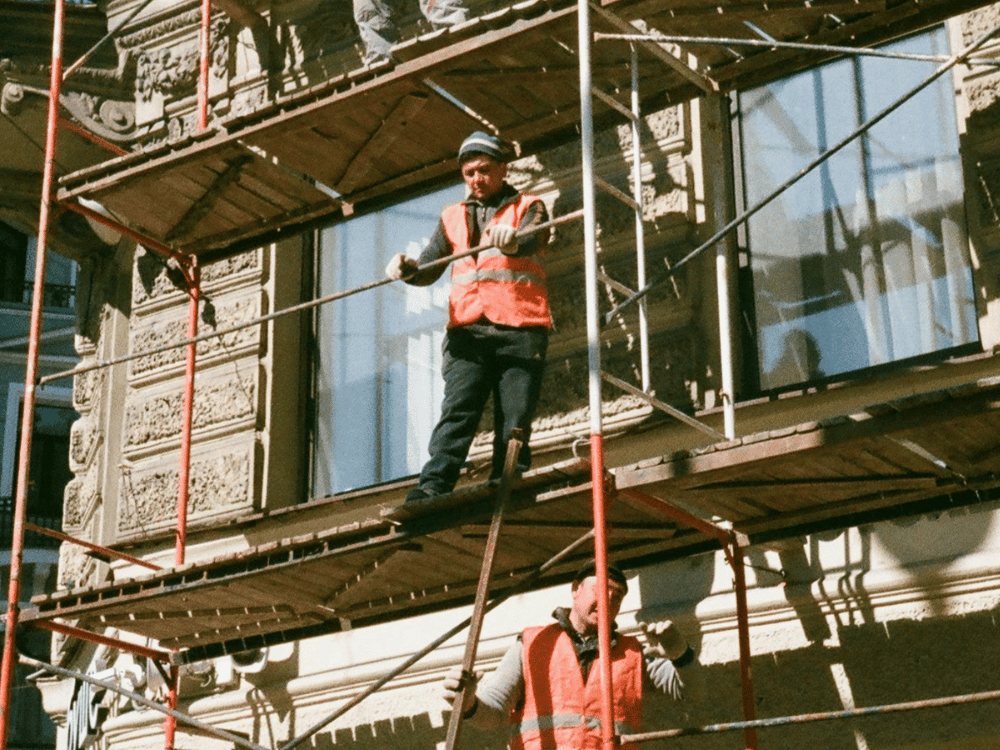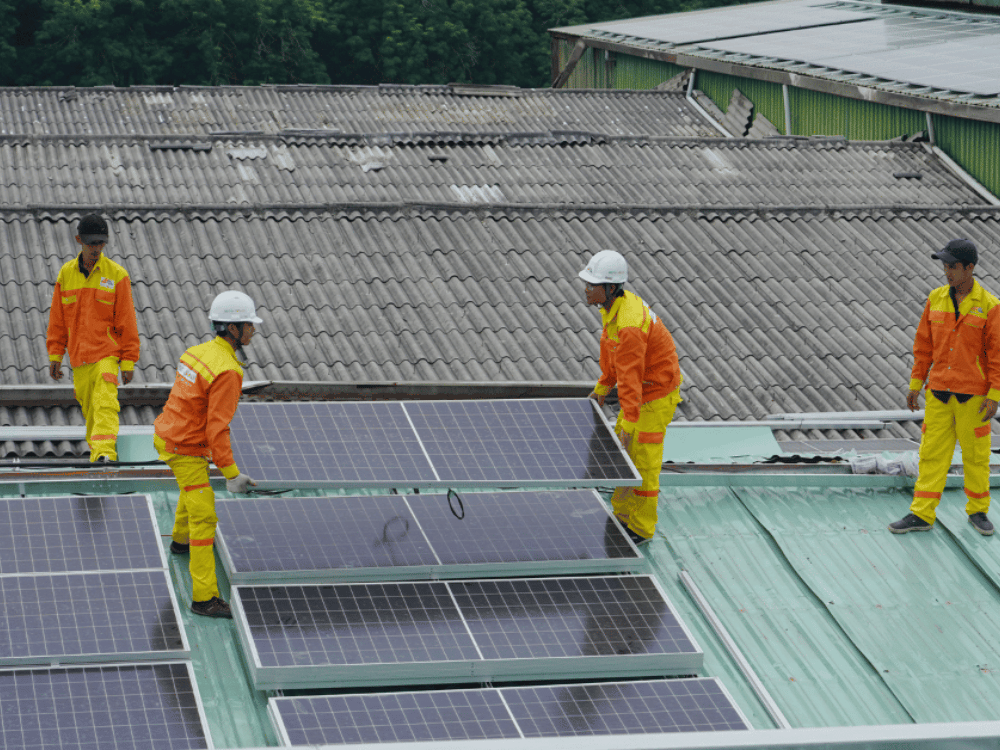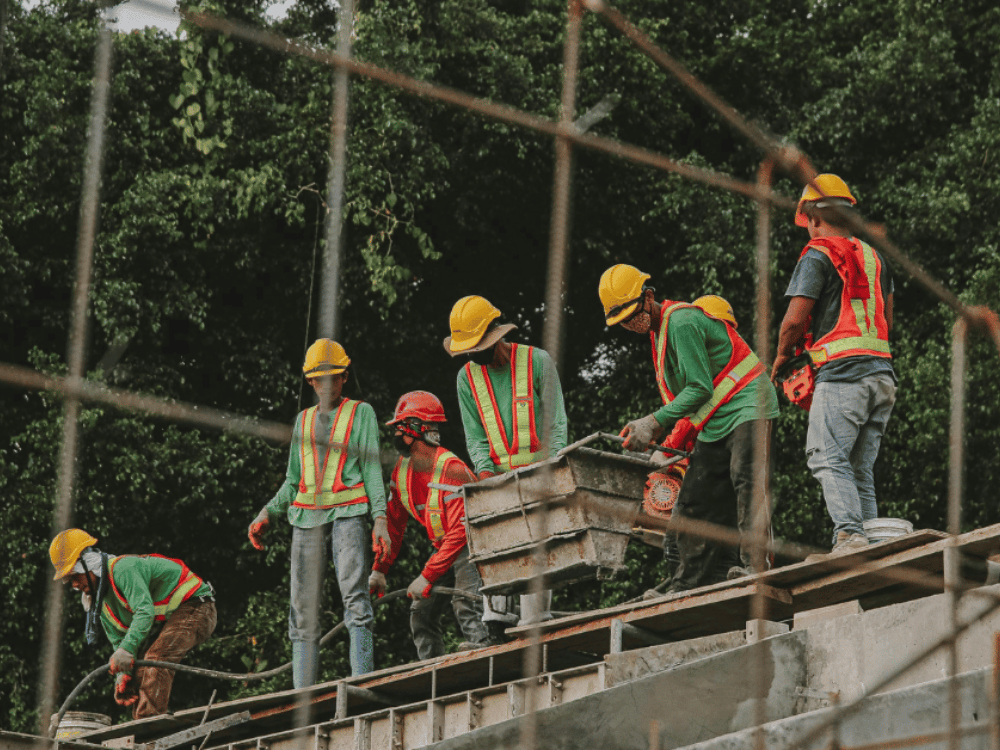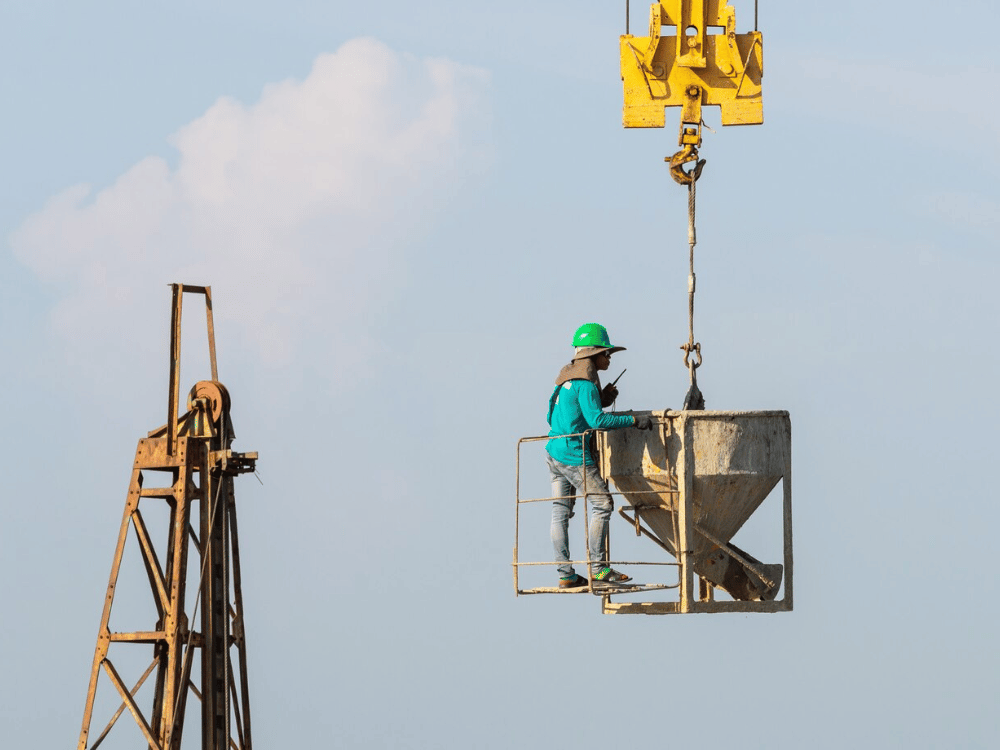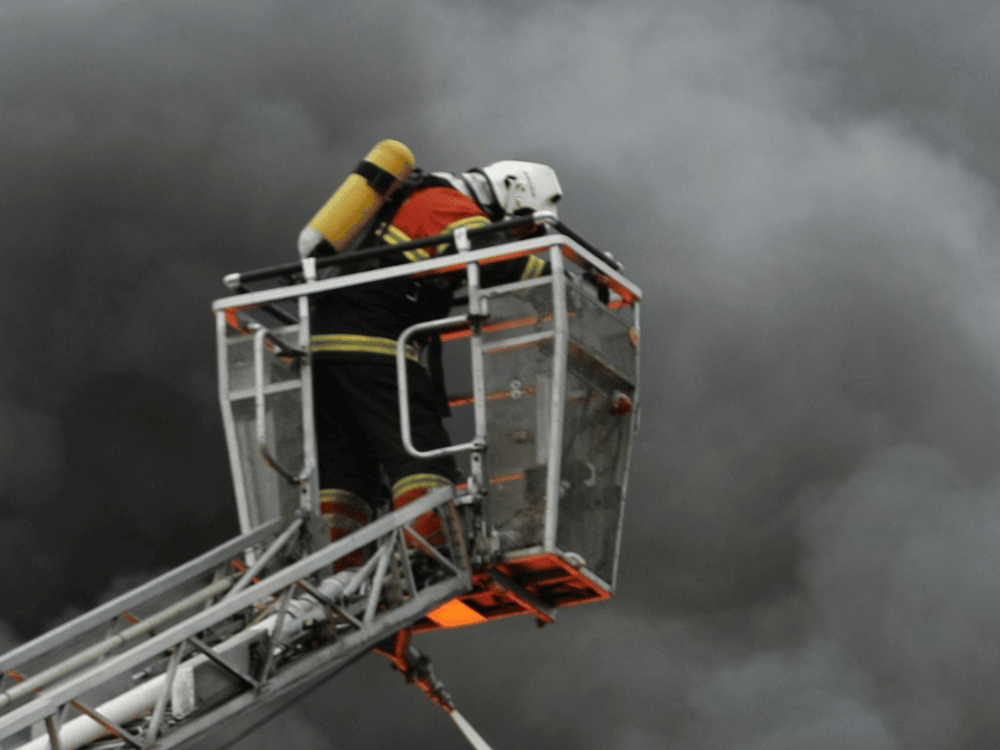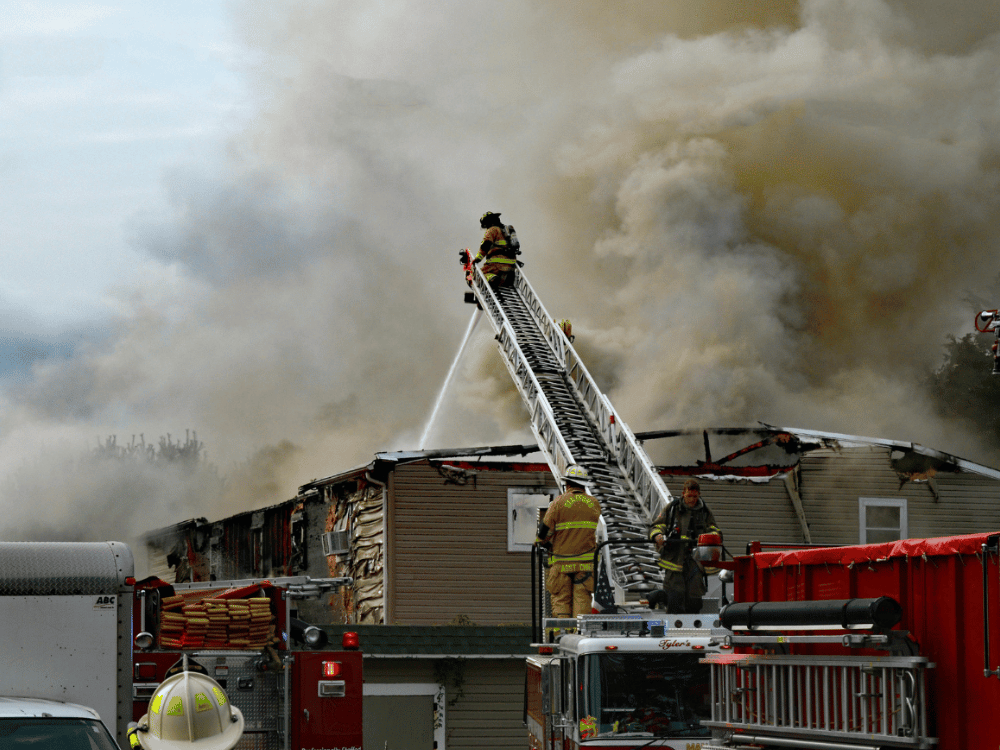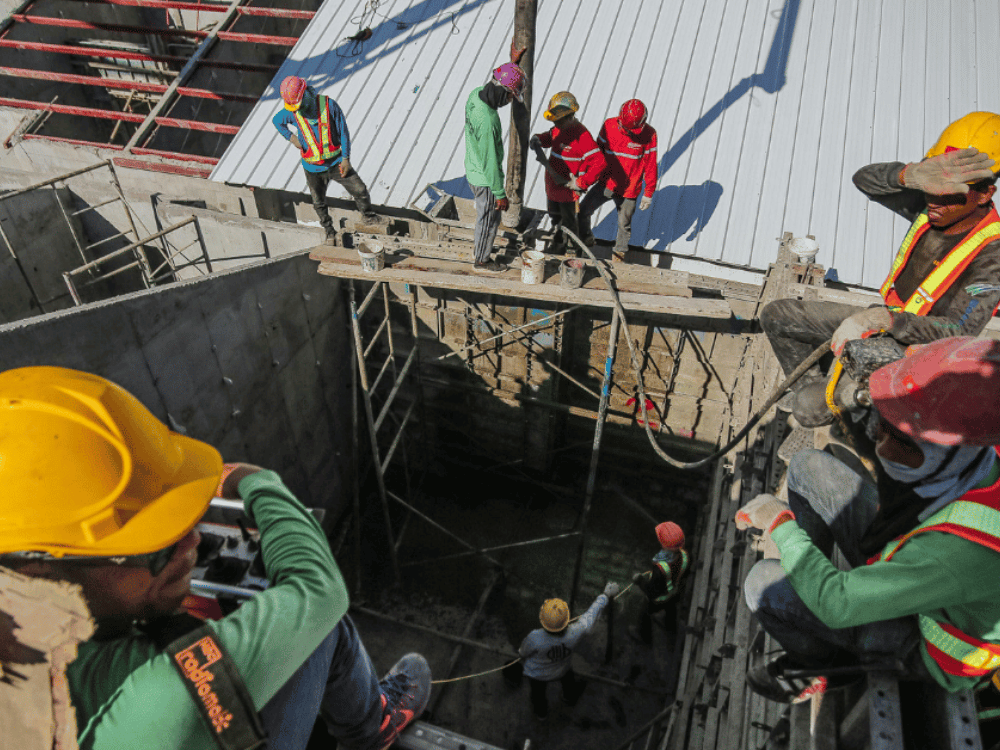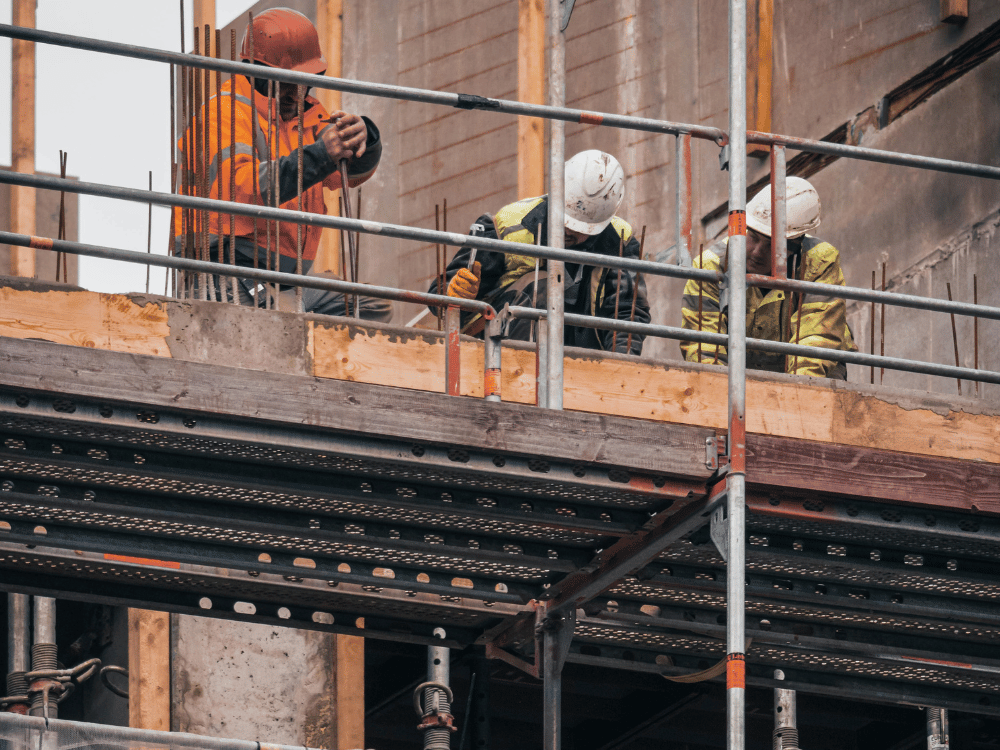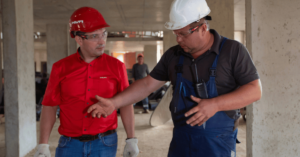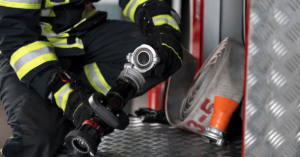Working at height is sometimes unavoidable and having the right precautions in place can help you protect your workforce.
The Work at Height Regulations 2005 outline the responsibilities employers have towards their team. They state that all work undertaken at height should be properly planned and carried out by competent staff who are fully trained.
Let’s dive into what else employers need to do to keep their staff safe while they’re working at height.
Key Points:
- Working at height can pose a lot of danger for individuals. Falls from roofs, including through fragile roofs, is one of the most common causes of workplace death and serious injury, according to the HSE
- Any work that is carried out at height must be planned, supervised, and undertaken by competent people. You must carry out a risk assessment beforehand to identify all the dangers
- There’s a three-step process every employer can follow to prevent their team falling when they’re working at height: Avoid, prevent, minimise
What Is Working At Height?
Anyone working at height will be working at a distance that could injure them if they were to fall.
The Health and Safety Executive (HSE) gives some examples of working at height, which include:
- Any work above ground level
- Falling from an edge, through an opening
- Falling from ground level into a hole in the ground
It doesn’t include any trip or fall on the same level or a fall on the stairs. If you’re injured while working at height, you’ll fall from one level to another.
Statistics from the HSE show that of all workplace injuries in 2021/2022, 8% were falls from a height.
Is Working At Height A Hazard?
Almost 30% of the 135 work-related deaths in the UK last year came as a result of falls from height. Those numbers show just how important the Work at Height Regulations 2005 are.
The figures also help to define further how robust safety measures must be for workers operating at height.
What Date Did The Current Working At Height Regulation Come Into Force?
Regulation 1 of the Work at Height Regulations defines that this set of key occupational safety and health (OSH) legislation came into effect on 6 April 2005.
Since the laws were established, many businesses have found themselves on the wrong end of legal actions following incidents on their premises.
For example, Wanzl Limited was fined £320,000 by the HSE when two workers fell three metres from a metal cage, sustaining serious injuries at their Coventry site.
Examples Of Working At Height
As we mentioned earlier, both the UK working at height regulations and HSE define working at height as any place where someone could fall a distance, causing personal injury.
But, to take that clarification one step further, some real-world examples of working at height are employees completing tasks on:
- Ladders
- Flat rooves
- Scaffolding
- Mobile Elevated Working Platforms (MEWPs)
- Trestles
- Formwork
Working At Height Regulations Explained
The HSE defines the purpose of Work at Height Regulations 2005 as:
“To prevent death and injury caused by a fall from height. If you are an employer or you control work at height (for example, facilities managers or building owners who may contract others to work at height), the Regulations apply to you.”
For further clarity, the legislation confirms employers should ensure any work from height is ‘properly planned’ and supervised.
Additionally, Regulation 5 states that competent personnel should only carry out these works.
Similarly, the regulations also mandate that employees are responsible for working with business owners to ensure their own safety and that of the people around them.
Working At Height Training
Working at height training is designed to give you all the knowledge you need to oversee and complete elevated applications safely.
As mentioned earlier, the regulations define that only competent people should complete work at height.
But how can you find or become competent? Additionally, how can accredited professionals prove their knowledge?
Our leading range of health and safety training courses provides all the necessary information. Whether you’re aiming to complete works at height or want to take your first steps toward a career within OSH, there’s a recognised course for you in our library.
How Long Does Working At Height Training Last?
Our working at height accreditation takes around one day to complete. The course also offers great flexibility by allowing businesses to learn through in-house sessions or virtually via MS Teams.
But why is the training necessary? And what measures will you and your team learn about?
What Are the Dangers of Working at Height?
Working at height can pose a lot of danger for individuals.
Falls from roofs, including through fragile roofs, is one of the most common causes of workplace death and serious injury, according to the HSE.
This not only happens in the construction industry, but also wherever people might be cleaning or repairing roofs. There is a significant risk from fragile constructions such as roof lights, corroded metal sheets, glass, and rotted chipboard.
When you’re planning any work at height, you should take into consideration the weather conditions, any chance of falling objects, and what the plan is in an emergency.
Working At Height Hierarchy Explained
Because working at height is fraught with hazards and risks, businesses can implement a series of hierarchical controls to help keep workers safe.
The hierarchic structure of safety measures defines a host of tools and approaches to safeguard employees. Let’s break these down further now.
- Avoidance: As the name would suggest, business owners should assess whether plant equipment or other tooling could be used to avoid workers going higher than ground level.
- Prevention via “safe places”: Safe places are defined as areas like balconies where work at height can be carried out more securely.
- Prevention through collective equipment: Barriers and other guards are perfect for preventing workers from getting too close to potentially hazardous areas like roof edges and window ledges.
- Use of PPE: Harnesses and anchor points are perfect examples of PPE designed to prevent workers from falling from height. Fall arrests can also help minimise the risk of injury when a fall is unavoidable.
- Fall distance mitigation: Working from lower platforms and using equipment like airbags can help reduce the risk of falling.
- Training: Completing our range of health and safety courses will help define you as competent. These accreditations also teach you to understand and implement safe working practices when supervising or completing operations at height.
Working At Height Control Measures
Control measures like those outlined above are a great starting point for planning works at height. However, there’s more that can be done to safeguard worker safety.
As we have alluded to, Regulation 4 of the Work at Height legislation mandates that every employer should ensure that all work at height is ‘properly planned’.
To meet this planning requirement, business owners should ensure:
- Works are carried out at ground level wherever possible
- Maintain safe access to and from elevated work sites
- Equipment is maintained regularly
- Equipment should also be fit for purpose
- Workers do not overstretch or overload equipment and platforms
- Protections are in place for falling objects.
Risks of Working at Height
The risks of working at height are numerous. From standard OSH risks like improperly stored equipment causing trip hazards to fragile surfaces and insufficient protections, there are plenty of things to watch out for.
However, two clear risks cause most incidents at height – falling from height and dropping equipment from height.
To clarify how common falls are, Roofing Today recently published findings from RIDDOR and HSE reports, which state that around half of all construction fatalities in 2022/23 were attributed to falls from height.
Likewise, falling objects have caused their fair share of fatalities and injuries. In fact, being struck by a moving object was the second most common cause of fatal accidents in the workplace in 2022/23 – accounting for 29 incidents.
Injuries caused by falling objects are a common issue in the food and drinks industry in particular. HSE figures show being struck by a falling object or a cut from a hand knife accounts for over 10% of major injuries in the sector.
Falling From Height Injuries
Unfortunately, falling from a height can incur serious injuries if the right protections aren’t put in place.
Broken bones, brain damage, and internal organ damage can all occur if someone were to fall from a height. Because of the devastating damage a fall can cause, even from a height of six feet, you’ll need to make sure the proper security measures are in place for your employees.
What Is Safe Wind Speed For Working At Height?
There are several theories on safe windspeed for continuing work on scaffolding or a roof.
However, the HSE outlines that workers should not work on rooves in certain weather conditions, and winds over 23mph are enough to affect someone’s balance.
What Is The Only Sure-Fire Way of Removing All Risk From Working At Height?
The safest (and most obvious) way to avoid falls from height in the workplace is to complete as much work as possible from ground level.
Not only does this keep workers safe from the risk of falling, but it also mitigates the risks associated with objects falling from height.
Additionally, conducting regular health and safety audits of your premises will help keep your overall processes and procedures as safe as possible.
What Safety Measures and Regulations Must Employers Enforce?
Any work that is carried out at height must be planned, supervised, and undertaken by competent people. You must carry out a risk assessment beforehand to identify all the dangers and minimise the risks to your workforce as much as possible.
- Think about factors like whether you can complete the work from the ground, what materials your team will be working with, and how long the project will take in total.
- You should always look to put measures in place that protect everyone (collective protection) before measures that protect only one person (individual protection).
- Collective measures could include the use of railings or scaffolds while harnesses could be used to maintain an individual’s safety.
- As an employer, you need to make sure all the equipment you’re using is in working order and is safe for your staff to use.
Anyone within your team who will be working at height should also have undergone the necessary training to be able to carry out the work effectively. Short-term jobs that last under 30 minutes and use ladders can be completed by people who have been given appropriate training such as how to tie the ladder so it’s stable to use.
More in-depth jobs will require professional qualifications to be taken with certified trainers to make sure your team is working in line with Work at Height Regulations 2005.
What is a Working At Height Risk Assessment?
As mentioned above, health and safety audits are a great way to keep your premises safe.
However, for continuous coverage and to help satisfy the legislation that calls for the procedure for working at height to be ‘properly planned’, employers should also conduct robust risk assessments.
Like ground-level checks, working at height risk assessments should cover these six core areas:
- Identify hazards
- Define who is at risk and outline what level of harm could be caused
- Evaluate risks and outline mitigation measures or precautions
- Document findings
- Review assessment
- Schedule follow-up checks
What Responsibilities Do Employees Have When Working At Height?
While employers have a responsibility to ensure their team are working in a secure environment with equipment that can protect them effectively, employees also have a duty to look after themselves and the people around them.
Employees should:
- Make sure their PPE is secured properly
- Use equipment in the correct way, without taking any risks
- Report any hazards to their employer, as soon as is practically possible
Employers should also keep their staff up to date with any risks that may arise from their work and highlight how they intend to manage these risks to keep their team safe.
How to Prevent Falls From Heights
There’s a three-step process every employer can follow to prevent their team falling when they’re working at height:
Step 1: AVOID
Where possible, you should avoid working from height by working from the ground and using extendable tools. You should also see whether you can lower things like lighting masts to ground level, and work on them there.
If you can’t avoid the situation, and working from height needs to take place, you should move to step two.
Step 2: PREVENT
Think about how you can prevent a fall from happening. For instance, you could use an existing place of work that’s already safe with railings etc to prevent any falls. Or you could teach your team how to use equipment that can stop them falling from a height.
Scaffolds are also a good idea to collectively prevent falls.
If you can’t prevent falls, go to step three.
Step 3: MINIMISE
Where there is no clear way of preventing a fall, you should minimise the impact it could have on someone if they were to fall.
One way of doing that would be to install safety nets and soft-landing systems (or air bags) so that the impact of the fall is heavily reduced.
Prepare Your Team For Working At Height
Ideal for operatives, supervisors, and managers, our Working at Heights training course gives your team everything they need to stay safe while carrying out their jobs.
They’ll cover legal responsibilities, inspection requirements, safe working practices and more, with a training course tailored to suit your needs.
Chat to our friendly team about how we can work with you to train your staff effectively.

